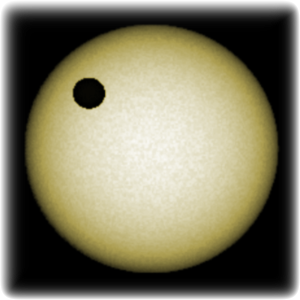
Planets similar to Jupiter in mass and radius and with orbital periods shorter than 10 days – so called hot Jupiters – constitute a relatively small group of planetary systems. An interesting aspect of such planets is that they are usually not observed in compact planetary systems and other nearby planets do not accompany them. The question of the occurrence rate of such planetary configurations is challenging for theories of formation and evolution of planetary systems, and remains open.
Statistical studies of extrasolar planetary systems show that planets similar to Jupiter in terms of mass and radius and with orbital periods shorter than 10 days – so called hot Jupiters – constitute a relatively small group of planetary systems. An interesting aspect of hot Jupiter-class planets is their apparent lack of additional, nearby planetary companions. These Jupiters are “lonely” in the sense that searches in the Kepler photometry and using transit timing variations do not find any other nearby planets in those systems. This is in a stark contrast to smaller, lower-mass planets that are very often found in multi-planet systems, and sometimes in mean-motion resonances. In this context, hot Jupiters with nearby planetary companions, like WASP-47 b – a member of the compact planetary system, are unprecedented outliers, challenging for theories of formation and evolution of planetary systems.
There are hot Jupiters on non-circular orbits, the existence of which could indicate that the orbit has not circularized so far or the orbital eccentricity is pumped up by gravitational interactions with unseen planetary companions. Calculations show that the circularization timescale is much shorter than the system age in most such cases. The efficiency of the circularization process depends on the tidal dissipation constant, which is in general poorly constrained for exoplanets. Dynamical models show that even very small (Earth-mass or less) companions in certain orbits can provide significant eccentricity excitation.
We use the transit timing technique to identify hot Jupiters, which could be perturbed by planetary companions. For planets for which such a signal is detected, we conduct high-precision photometric and spectroscopic observations to get to know the system architecture better. If perturbative origin of eccentric orbits can be eliminated, then the tidal dissipation constant could be constrained tighter. This, in turn, could help construct more precise models of the planetary internal structure. We also search for any sign of long-timescale changes in orbital periods that could be caused by orbital decay or apsidal precession. As a by-product of the project, we refine physical parameters of investigated planetary systems.
We use a network of 0.5–2.0 m telescopes, including a 0.6 m Cassegrain telescope at our observatory, to acquire precise photometric time series during transit events.
Group:
- dr Gracjan Maciejewski
- prof. Andrzej Niedzielski
Most important publications:
Maciejewski G., Dimitrov D., Fernández M., Sota A., Nowak G., Ohlert J., Nikolov G., Bukowiecki Ł., Hinse T. C., Palle E., Tingley B., Kjurkchieva D., Lee J. W., Lee C.-U. (2016) Departure from the constant-period ephemeris for the transiting exoplanet WASP-12 b, A&A 588, L6
press notes: umk.pl
broadcast in Radio PiK: radiopik.pl (mp3)
more about the project: TTV

 Piwnice k. Torunia, 87-148 Łysomice
Piwnice k. Torunia, 87-148 Łysomice